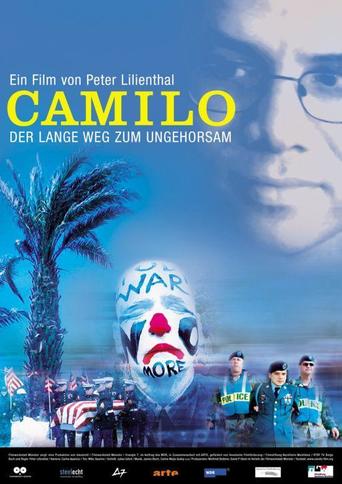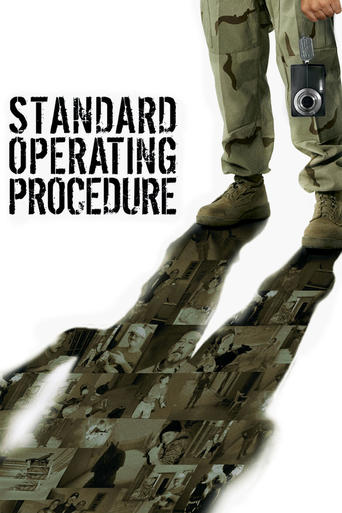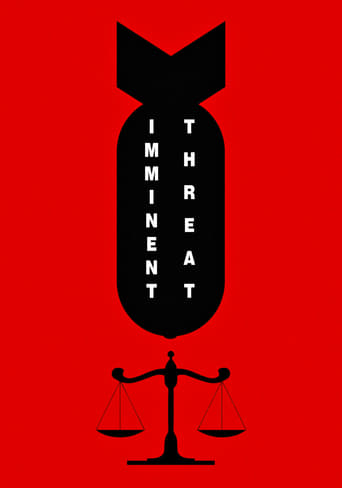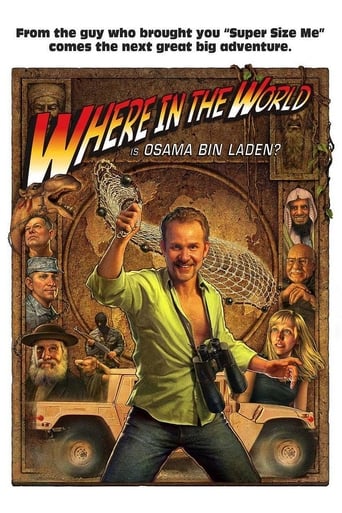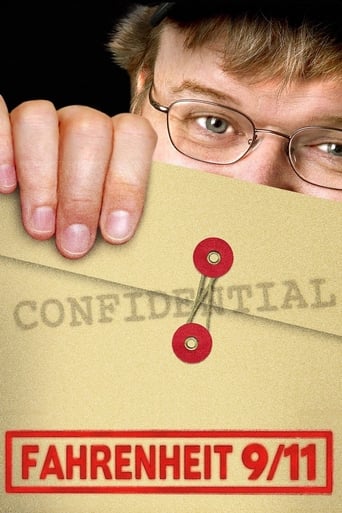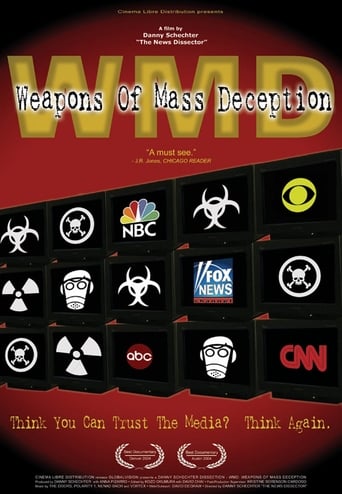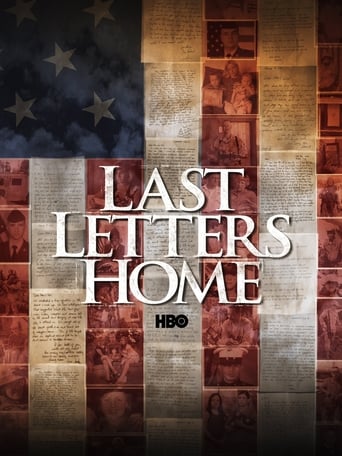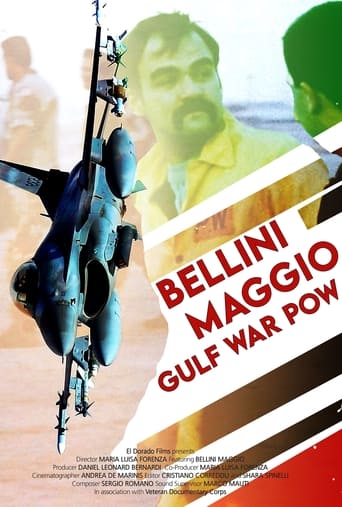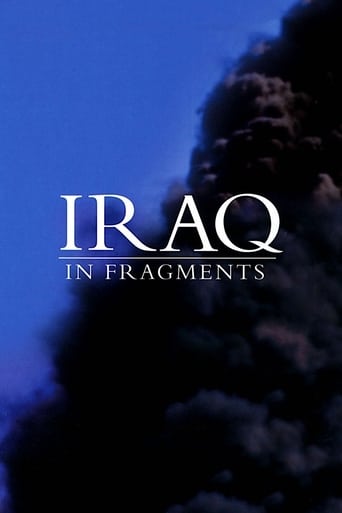
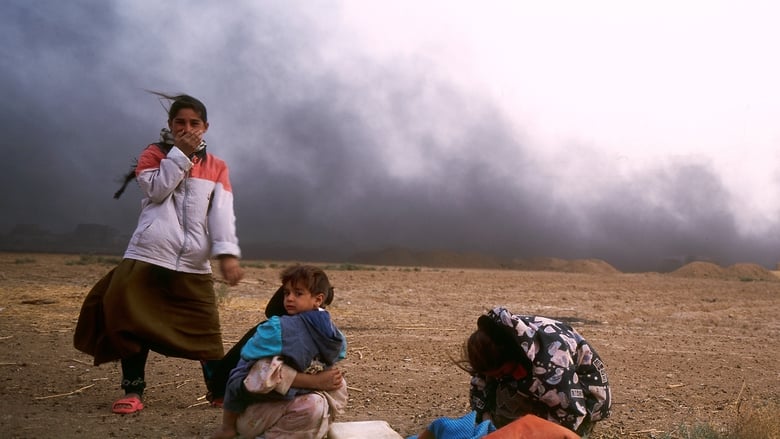
Iraq in Fragments (2006)
An opus in three parts, Iraq In Fragments offers a series of intimate, passionately-felt portraits: A fatherless 11-year-old is apprenticed to the domineering owner of a Baghdad garage; Sadr followers in two Shiite cities rally for regional elections while enforcing Islamic law at the point of a gun; a family of Kurdish farmers welcomes the US presence, which has allowed them a measure of freedom previously denied. American director James Longley spent more than two years filming in Iraq to create this stunningly photographed, poetically rendered documentary of the war-torn country as seen through the eyes of Sunnis, Shiites and Kurds.
Watch Trailer
Cast
Similar titles

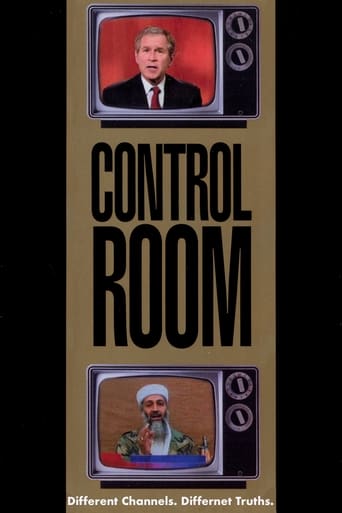
Reviews
You won't be disappointed!
Boring
All that we are seeing on the screen is happening with real people, real action sequences in the background, forcing the eye to watch as if we were there.
The joyful confection is coated in a sparkly gloss, bright enough to gleam from the darkest, most cynical corners.
This is stunning film.Although perhaps it would have had more impact seeing the film right when initially released, when the conflict in Iraq was near its peak of violence, the documentary still offers a highly unique look into the Sunni, Shia, and Kurd conflicts. This is the ultimate slice of life documentary that delves straight into the everyday lives of Iraqis. Its goal isn't to offer some kind captivating narrative, nor to offer any kind of political commentary. It moves at a slow, tranquil pace, loosely structured in three chapters. The filmmaker, James Longley, stays as detached and neutral as possible, yet his camera is always strikingly up close and intimate with his subjects. There is no narration, allowing the people being filmed to fully tell their stories. The craft on display comes from the editing, which is highly stylized -- however, save for a few moments where it was overly jerky, the editing is in my opinion masterful and gives the film such a unique feel and rhythm that I haven't found in any other documentary. This might be a stretch, but at times while watching I felt like this is the kind of documentary that Terrence Malick would make. It's that cinematic! Needless to say, I also thought it was visually stunning.I imagine many will be turned off by Longley's technique here, but I think if you're in a mellow mood, the film can slowly take hold of you and let you become immersed in the setting and the people's lives. The film offers nothing more than a look into the struggling lives of Iraqi citizens, dealing with foreign occupiers, adjusting after years of oppression, and trying to survive in an intense civil/religious war among each other. We witness their every day lives, the mundane and constant struggle of it all. We listen in on their conversations and interactions. We see them in both happy and sad moments. Ones of despair and chaos. We see brutality and bloodshed. Some have called this film boring, but I found it a very unique, at times fascinating, and always intimate portrait of a great human struggle.This is an essential film for people interested in the conflict or documentaries as an art-form.
The most important thing lacking in my understanding of the problems in the Middle East and Iraq in particular is knowledge about the people and their beliefs. This film provides a tiny peephole into what drives Iraqis and what they feel is important. A very revealing aspect of the film is how Muslim religious leaders are able to get followers to exact justice upon those who don't agree with their religious beliefs. An incident where market vendors who are accused of selling alcohol are abused and kidnapped makes is easy to see how Iraqis, driven by religious zealots, can perpetrate such atrocities. Overall, this piece of work is amazing for its ability to get close to the everyday Iraqi and to give the viewer an unbiased glimpse of what life is like for them.
n fact the most disquieting aspect of the film is that it was shot between 2003 and 2005, meaning that, however bad daily life seemed then, things have grown far worse since the camera was switched off. Director James Longley would no doubt concur but, cleverly, he never makes his own views explicit, preferring to let the images speak for themselves.And speak they do, whether it's the first section of the film in which 11-year-old Sunni boy Mohammed is forced to choose between work and education or, better still, a up-close look at the Shiite political/religious group run by Moqtada al-Sadr.The third strain of the film retreats from the extremes of the first two parts by way of emphasising that these are ordinary folk unfortunate enough to live in extraordinary times and focuses on rural Kurdish families and, in particular, fathers and sons.Throughout, it's shot so brilliantly that it feels less like a documentary than a superior drama. Best of all, though, is Longley's compassionate depiction of people to whom, crucially, we can all relate.
Longley's visually beautiful and emotionally saddening film in three parts, shot during two years spent in Iraq between the immediate aftermath of the invasion in 2003 and 2005, arouses tremendous hopes but ends by quite dashing them. Longley is great with a camera and patient with children and his documentary is full of lovely, yellow-filtered images. But the project to describe post-invasion Iraq is both over-ambitious and reductive. Longley wants to cover what he thinks are the three main divisions of the country -- Sunni, Shiite, and Kurd. But he tries to do this by reducing his focus to children and old people, speeches, and a few scenes of public violence, and the result feels empty.Most memorable, because most integrated and most eloquently narrated (by the wispy, childish voice of the boy himself), is the first segment about eleven-year-old fatherless Mohammad (his father disappeared after speaking up about Saddam at some time in the past), who lives and works in the Sheikh Omar district of Baghdad. The camera is close up on Mohammad's sweet, expressive young face; or his voice-over declares, "Baghdad used to be beautiful" over shots of the city before the invasion (Longley made a short visit in 2002) and then, "the world is so scary now" as we watch big brown helicopters sputter threateningly overhead.We never see Mohammad at home, but Longley hung out at the little auto repair shop where Mohammad was working long enough to fade into the tool racks and, astonishingly, to film uninterrupted Mohammad's encounters with his sometimes affectionate but more often abusive boss -- who smacks him and calls him a son of a whore for playing marbles with other boys; for not knowing how to spell his father's name; and finally for even spending time at school, which he is forced to give up to keep the job.The boss also speechifies a bit about the occupation, which he considers far inferior to the days of Saddam: we can't help seeing this fat bully as a little Saddam lingering on in the Sheikh Omar district. Other voices are cut in throughout the segment with Baghdadis, presumably Sunnis (since that's meant to be the focus of this section), declaring the same things: the Americans just came to set up a military base, they're here for the oil (Mohammad says that too), they have not brought democracy, it's even worse now than under Saddam, everything they say is a lie.Desperate for a father, Mohammad murmurs repeatedly that his boss loves him but in the end admits he has to escape the abuse. The rationalizing over, he leaves to work at his uncle's larger shop. He may still have his dreams of becoming a pilot and flying to more beautiful countries. Earlier, we watched him at school looking bright and eager as the teacher drilled the children on the words "dar" (house) and "dur" (houses) and how to use them.Did Mohammad get to go back to school and learn how to write "Haithem" (his father's name)? We don't know, nor do we see his new workplace, or hear from relatives. Why did Longley focus so much time and attention on this boy? There's something heartrending about his little story, but he can't be seen as the future of the country. Alas, he has little future. This picture of Baghdad is vivid, but incomplete.Parts two and three focus on Moqtada Sadr, Najf, and the movement to empower the Shiite majority and bring religious rule to the country; and on a sheep-herding and brick-making family in Kurdistan. Longley and his interpreter Nadeem gain access to the Moqtada camp through one of his men, thirty-two-year-old Sheikh Aws al-Kafaji, who let them film his activities, strategy meetings, rallies, marches, speeches, religious ceremonies, and an alcohol raid on the local market. There's even footage of a hospital, with a wounded man on a stretcher yelling, "Is this democracy?" "Amrika 'adu Allah," someone declares -- America is the enemy of God. Most noteworthy is footage of Sadr's men (or Kafaji's?) roughing up random people in the market suspected of selling booze and of encounters of Sadr's men with Spanish troops around the Imam Ali Shrine. The rest is a chaos of images, vivid and intense enough, but -- despite clear translations in subtitles of all the speechifying and excerpts from committee meetings -- without any sense of what it all may mean. No doubt about the fact that a lot of this material was dangerous to shoot, and again, Longley's camera-work is superior; this section will serve as excellent stock footage for future historical documentaries of the period.Things became so dangerous that by September 2004, Longley decided to go north -- Koretan, south of Erbil, a small community of farms and brick ovens. From here on, no more Arabic is spoken, only the Kurdish language. After all the tumult of the Shiite uprising, Longley reverts to a smaller canvas, again focusing on boys, two close friends this time, so intimate they walk hand in hand to school, and their fathers. Mostly we see one of the boys, "Sulei" (Suleiman), an unsmiling youth with a chiseled face who wants to be a doctor, and his aging, bespectacled, chain-smoking father, a shepherd. Sulei talks about struggling to study his hardest to go into medicine, but again, the demands of supporting his aging dad and working both at baking bricks and tending sheep force Sulei to drop out of school -- even sadder than the case of Mohammad in Baghdad, because Sulei had a real desire to be somebody. The picture is the opposite here. Someone mentions Saddam's massacre of Kurds in the Eighties and moving in of Arabs, and the old man says, "God brought America to the Kurds." Quite a contrast to "America is the enemy of God." But again, a lonely boy without a future is no picture of the Kurds.
